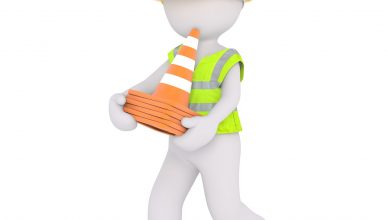Latest Posts

Nanomaterial risk profiling puts safety first
With uncertainty around the risks of nanomaterials hampering the EU’s innovative potential, researchers are working on a safety concept to better monitor this
[...]
Currently, in the EU, nanomaterials are covered by the same rigorous regulatory framework that ensures the safe use of all chemicals and mixtures: REACH and CLP regulations. This means that hazardous properties of nanoforms of substances will have to be assessed and their safe use needs to be ensured.
One of the key pieces of European legislation affecting nanomaterials is Regulation (EC) No 1907/2006 of the European Parliament and of the Council of the European Union called Registration, Evaluation and Authorization of Chemicals (REACH). Under REACH, like in bulky state substances, manufactures and importers of substances with nanoforms have also the legal obligation to register and to show safe use for them. Depending on the volume placed on the market, manufactures and/or importers, as part of their registration, must submit information on both human health and environmental effects, and hazardous nanoforms – an estimation of exposure throughout the life cycle. However, as REACH does not have explicit provisions on nanomaterials, it has resulted in only a few registrations containing nanospecific information.
The same applies to Classification, Labeling and Packaging Regulation of substances (CPL). For those that have hazardous properties, the regulation requires ECHA to be notified in a way that guarantees its safe use.
Together with EU Member States, ECHA facilitates two different evaluation processes under REACH: dossier and substance evaluation. Under dossier evaluation, ECHA can carry out a compliance check for any registration dossier. The aim of the compliance check is to verify that all information requirements are fulfilled. If they are not, ECHA can request further information or testing. On the other hand, the aim of the substance evaluation is to clarify whether a substance poses a risk to human health or the environment. ECHA can request further information or testing to verify the concern. The substances subject to this process are indicated on the Community rolling action plan.
However, only a few EU regulations have explicit legal requirements on nanomaterials (such as biocides -BPR-, phytosanitary, cosmetics, pharmaceuticals, toys, food or electronic devices), indicating the need to include nanospecific indications for the other sectors to improve the efficiency and compliance with regulation.
Legislation for environmental, worker and consumer protection are typically implemented in the EU through directives. If nanomaterials pose a risk to the environment, workers or consumers, the generic rules set in the legislation apply in the same way to nanomaterials as for other forms of a substance.
One of the key pieces of European legislation affecting nanomaterials is Regulation (EC) No 1907/2006 of the European Parliament and of the Council of the European Union called Registration, Evaluation and Authorization of Chemicals (REACH). Under REACH, like in bulky state substances, manufactures and importers of substances with nanoforms have also the legal obligation to register and to show safe use for them. Depending on the volume placed on the market, manufactures and/or importers, as part of their registration, must submit information on both human health and environmental effects, and hazardous nanoforms – an estimation of exposure throughout the life cycle. However, as REACH does not have explicit provisions on nanomaterials, it has resulted in only a few registrations containing nanospecific information.
The same applies to Classification, Labeling and Packaging Regulation of substances (CPL). For those that have hazardous properties, the regulation requires ECHA to be notified in a way that guarantees its safe use.
Together with EU Member States, ECHA facilitates two different evaluation processes under REACH: dossier and substance evaluation. Under dossier evaluation, ECHA can carry out a compliance check for any registration dossier. The aim of the compliance check is to verify that all information requirements are fulfilled. If they are not, ECHA can request further information or testing. On the other hand, the aim of the substance evaluation is to clarify whether a substance poses a risk to human health or the environment. ECHA can request further information or testing to verify the concern. The substances subject to this process are indicated on the Community rolling action plan.
However, only a few EU regulations have explicit legal requirements on nanomaterials (such as biocides -BPR-, phytosanitary, cosmetics, pharmaceuticals, toys, food or electronic devices), indicating the need to include nanospecific indications for the other sectors to improve the efficiency and compliance with regulation.
Legislation for environmental, worker and consumer protection are typically implemented in the EU through directives. If nanomaterials pose a risk to the environment, workers or consumers, the generic rules set in the legislation apply in the same way to nanomaterials as for other forms of a substance.




